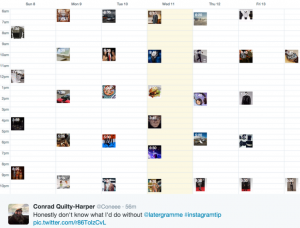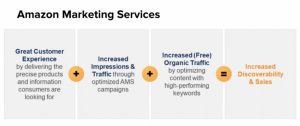The online marketplace continues to evolve — growing larger and becoming more niche.
Social media used to be a novelty, but there are now hundreds of different platforms. The most popular sites have even expanded from one or two like Facebook and Twitter to nearly a dozen, including Instagram, Tumbler, Pinterest, Snapchat and more.
Desktops used to be the only way that users accessed the Internet. Now we have laptops, desktops, smart phones, smart TVs, virtual reality headsets, smart watches, and more.
The constantly changing landscape has forced brands to reevaluate the way they reach customers. They have even had to reconsider how they use established tactics, such as video.
Here are a few ways that publishers’ video strategies have changed with the recent changes in the online landscape:
Merge Content and Video Production
When video emerged as a major player, many brands appointed a position to create a video strategy and oversee production.
Now, many brands are consolidating positions to make the same person responsible for both video and content production. Some have also included social media in the responsibilities for that position.
It makes sense to have one person responsible for content and video since the two are so closely related. The same search data and user indicators are used to create both content and video, and both will frequently cover the same topics or answer the same questions. Both will also be shared on the same platforms.
Video isn’t some exotic creature that makes the occasional appearance. It is just as important as written content, and publishers are treating it as such.
Invite Buy In from All Stakeholders
The marketing director and video producer are not the only people that companies are asking for opinions about video.
More brands are asking all their employees for feedback about video, including asking for video ideas, seeking insights about affects, and more. Everyone from interns to head writers are expected to have an opinion about the types of videos that would reach customers.
We are all customers ourselves, so it only makes sense to ask the “common man” for opinions about how content can better reach people.
Differentiation by Platform
The videos that are successful on Facebook are not necessarily the same videos that are successful on YouTube.
Smart brands know that they need to create videos specifically for different platforms.
For example, video that is shared on Twitter should be no longer than a Vine, while video shared on Facebook can be a little longer but should generally be less than a minute (with some exceptions).
Video on YouTube can be longer, which means that it can also have a higher production value and more in-depth content.
Mobile video introduces many other considerations. Mobile screens are much smaller, so the video has to be created with improved visibility in mind.
Brands must study the needs of each platform to ensure optimal success of their videos.
Introduction of Live Video
Personalization can help brands better connect with their customers. Brands have to break through that corporate veil to make customers feel invested.
Scripted video can sometimes seem too much like an ad or just another exercise in image crafting. By using live video, brands can connect on a more personal level with customers and make them feel more engaged.
Live video can be used for interviews, coverage of an event, a peek behind the scenes, an office tour, and more.
Live video shows off who you are as a brand, providing a glimpse into the personality of your employees and the culture of your office. With live video, your brand seems more “human” and approachable.
Content Created from User Driven Data
User-driven data will continue to be a major focus for the creation of all content for some time.
User-driven data takes cues from user behavior, such as the sites they have been visiting, the products they have been looking at, and the interests they express on social media.
The data is used to better predict what users need or want, and it can be used to create content that improves sales and conversions.
Publishers are relying more on user-driven data to create video on all platforms. That includes creating more video that answers search queries or that solves a customer problem.
Digital & Social Articles on Business 2 Community(14)






